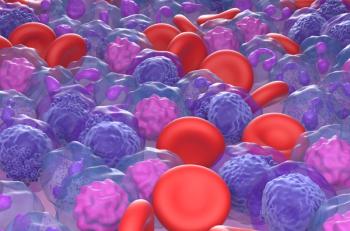
Disease Characteristics Vary Widely Among Patients With CRSwNP or CRSsNP
The investigators of this new study wanted to more clearly define the patient characteristics of the 2 main types of chronic rhinosinusitis: with nasal polyps (CRSwNP) and without nasal polyps (CRSsNP).
Despite there being 2 main subtypes of chronic rhinosinusitis—with
They published their findings
This retrospective cohort study included data from 110 patients living with CRSwNP and 106 living with CRSsNP, and their principal outcomes were symptom severity using the Sino-nasal Outcome test, radiographic severity via the Lund-Mackay CT score, and total sinus surgeries. The mean age of each group was equivalent, at 50.2 years for those with CRSwNP and 48.7 years for those with CRSsNP; however, there were significantly fewer female patients in the CRSwNP cohort: 40.9% vs 58.5%.
Overall symptom severity came in at similar levels between the 2 patient groups. These mean (SD) scores were 68.1 (18.6) in the CRSwNP group and 73.2 (21.27) in the CRSsNP group (P = .097). The prevalences of allergic rhinitis and asthma were more common in the CRSwNP group compared with the CRSsNP group (P < .05 for both), at 43.6% vs 19.8% and 48.2% vs 15.1%, respectively, but asthma severity as measured by FEV1 predicted percentage was close to equal: 82.19 (19.43) and 81.68 (19.32), respectively (P = .442).
Not surprisingly, the Lund-Mackay score was approximately 38% lower in the CRSsNP group, at 7.4 (2.3) vs 11.9 (3.6) (P = .016); the lower the Lund-Mackay score, the lesser the sinus opacification. In addition, significantly fewer surgeries were seen among the patients who had CRSsNP vs CRSwNP (P = .023).
An additional subanalysis carried out between patients who did or did not have comorbid asthma in each patient group found statistically significant differences in Lund-Mackay scores and total surgeries in the CRSwNP group only:
- CRSwNP with asthma:
- Lund-Mackay score: 12.8 (3.2)
- Total sinus surgeries: 2.34 (1.3)
- CRSwNP without asthma:
- Lund-Mackay score: 9.7 (3.1) (P = .038)
- Total sinus surgeries: 1.35 (0.8) (P = .043)
- CRSsNP with asthma:
- Lund-Mackay score: 7.8 (2.4)
- Total sinus surgeries: 0.94 (0.4)
- CRSsNP without asthma:
- Lund-Mackay score: 6.9 (1.9) (P = .294)
- Total sinus surgeries: 0.86 (0.3) (P = .188)
The study authors noted that the higher total of surgeries in the CRSwNP group “is consistent with laboratory indicators of sinusitis such as peripheral eosinophil count and immunoglobulin [IgE] count,” which can be seen in the following data:
- Peripheral eosinophil count:
- CRSwNP: 0.7 (0.3)
- CRSsNP: 0.1 (0.1) (P = .038)
- IgE count:
- CRSwNP: 315.2 (301.6)
- CRSsNP: 221.2 (205.3) (P = .021)
“In phenotyping of CRS, the cornerstone is the presence or absence of polyps, evaluated by endoscopic examination and radiological imaging,” the study authors concluded. “We conducted a comprehensive phenotypic characterization study to determine the clinical features of patients with CRSwNP, comparing them with CRSsNP patients in order to highlight any discrepancy between both groups in terms of patients’ characteristic and disease outcomes.”
Their hope is that their findings will be one step forward in optimizing treatment regimens for patients with CRSwNP or CRSsNP, because the “distinctive variability” between the patient groups they studied “implicates a potential prognostic value worthy of examination.” They added a caveat, however: Additional studies need to have larger patient groups.
Reference
La Mantia I, Ciprandi G, Varricchio A, Ragusa M, Cipolla F, Andaloro C. When rhinosinusitis is not just rhinosinusitis: clinical characteristics and phenotypes of patients with type 2 chronic rhinosinusitis with nasal polyps. Acta Biomed. 2022;93(4):e2022240. doi:10.23750/abm.v93i4.12561
Newsletter
Stay ahead of policy, cost, and value—subscribe to AJMC for expert insights at the intersection of clinical care and health economics.













































